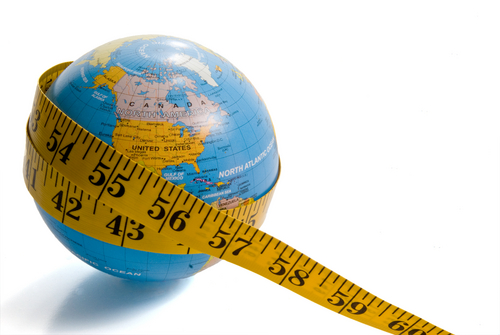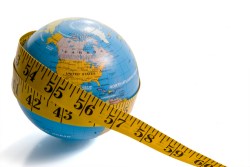After a year filled with superstorms, droughts, floods, and wildfires, there’s little doubt that climate change is having a dramatic impact on our lives. But it also threatens to cause more subtle impacts on our health. And we’re just starting to get a handle on what they might be. The latest? It looks like climate change and its effect on food production might take the obesity crisis in the U.S. to a whole new level.
A series of letters in the current issue of the American Journal of Public Health — all of which are highly speculative — explores the relationship. The theory comes out of recent work on the links between food prices, “food insecurity,” and obesity.
For the record, food insecurity is distinct from hunger. The USDA defines it as “limited or uncertain access to adequate food” — something experienced by almost 15 percent of American households at some point last year. It can result in hunger, which is considered a physiological condition, but it doesn’t always. Sometimes food insecurity has a greater psychological effect whereby people make poor decisions about what and how much to eat when the prospect of not enough food presents itself.
A study I wrote about earlier this year prompted the interest in examining the link between food insecurity and climate. In it, a team from the University of Washington led by epidemiologist Adam Drewnowski, who is doing some of the strongest work in this area, wanted to explore the nuances of food deserts and shopping patterns. When they looked at how a representative group of Seattle residents shopped, they found that low prices, not proximity, was the dominant factor in determining where people bought their groceries. And furthermore, they found that those who shopped at the low-price stores ate worse and suffered from higher obesity rates than those who didn’t, even after income levels and education were taken into account.
Meanwhile, a group of University of Minnesota epidemiologists looked into the relationship between food insecurity and its effects on food choices. They observed the diets of a group of residents of a Native American reservation in South Dakota and found the greater the food insecurity the greater the likelihood that residents fed their children less healthy foods and shopped at convenience stores.
How does this relate to climate? It all comes down to price vs. nutrition. Drewnowski himself explained it in one of the recent letters printed in the American Journal of Public Heath:
Food prices are indeed a mechanism that links obesity and poverty. As incomes decrease, energy-dense grains, sweets, and fats become the best way to provide daily calories at a manageable cost.
… A rise in food prices caused by climate change will lead to higher, not lower, obesity rates in the United States. The spikes in food prices observed in 2008 and again in 2010 were highest for the healthier foods, particularly vegetables and fruit. The current drought conditions have damaged crops and will lead to food-price increases in 2013, especially for dairy, eggs, and meat. As food prices continue to increase, refined grains, added sugars, and vegetable fats will replace healthier options, first for the poor and later for the middle class.
Even so, it’s not like grains won’t see significant increases in price due to climate change. And as Grist noted recently, there’s legitimate concern that mainstay foods like pasta are also at risk. Wheat, more than corn, rice, and soy, seems particularly sensitive to the changes we’re experiencing. That fact is putting wheat production under pressure in many regions of the world and in the U.S., where it’s on a collision course with U.S. energy production. The best durum wheat-growing areas now lie over the Bakken Shale, a prime fracking region. How’s that for irony?
Pasta aside, grains still represent a small part of the price of processed food. So it’s those foods — made by increasingly efficient technology — that will remain affordable while meat, eggs, dairy, and vegetable prices spike.
This phenomenon is already being witnessed in other parts of the developed world. The famous Mediterranean Diet, for example, is under threat in — of all places — the Mediterranean. As most Grist readers probably know, the Mediterranean Diet is considered one of the healthiest (and in many ways easiest and most delicious) ways to eat. It’s based around vegetables, fruits, grains, fish, olive oil, and red wine.
In an article published in the British Medical Journal, researchers from Italy looked at low- and middle-income residents in one town in south-central Italy and found that the lower the income, the less likely residents were to eat their traditional diet. And the gradations were subtle. In other words, small drops in income led to a proportionate increase in the consumption of high-calorie, low-nutrient processed and convenience foods.
These particular changes aren’t yet driven by climate change. Cultural shifts and the struggling Italian economy are the main causes. But it doesn’t take much imagination to conclude that price increases could spell the end of the Mediterranean Diet for low- and middle-income people throughout the developed world. And that would drive obesity rates ever higher.
Of course, this all remains educated speculation. As Drewnowski says in his letter, “the potential impact of climate change on global nutrition would benefit from a more detailed analysis.” Indeed — especially if it’s poised to undo all our other, more intentional efforts to get obesity under control.




